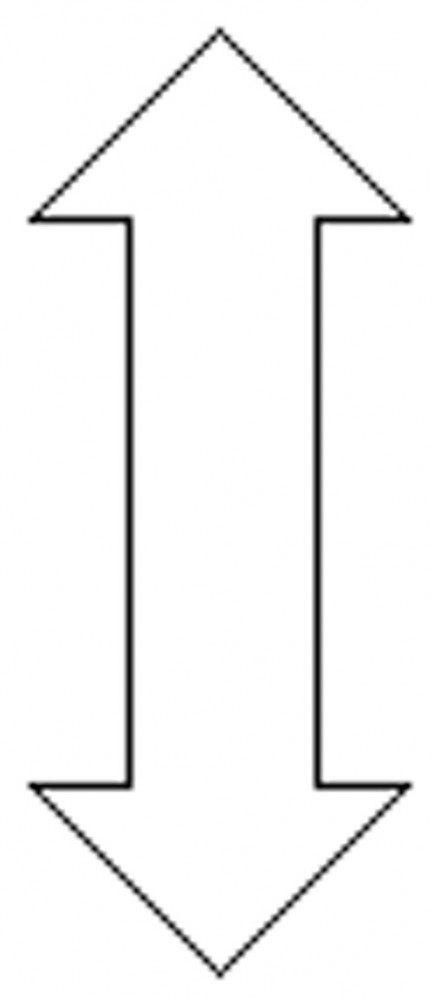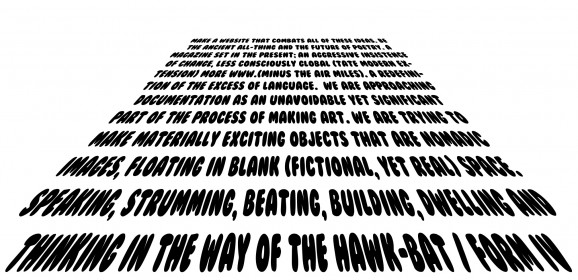BEFORE THE THING 

000


29/11/2014
>FORM IV
The new POETRY (under construction)
Not the Oxford English Po-et-ry (noun) but an action that is not a luxury (i.e. Audre Lorde’s poetry); poetry that is the insistence of the possibility of freedom (from language, from culture, from art, from reality)∝.
(I’m going to interject here that I wanted to write a paragraph about the future of this http:/, but went on a bit of a tangent and if you’d like to cut the crap, then please skip to the end [***].)
29/11/2014 Last week in a bookshop I flicked through the ‘Power 100’ issue of Art Review. Nicholas Serota was number one. A few days later someone sent me an article that Will Self had written about the new Tate Modern extension.
In it, he describes the Tate Modern as yet another ‘visitor attraction that reifies the ever-widening gulf between have and have-nots’ and the new extension as a ‘life size model of what an art gallery would be should our culture have need of one’. His argument was that since Duchamp∅, the art object has lost it’s ‘meaningfully unique’ status, thus doesn’t require a ‘unique place, time and space’ in which to exist.
∅. Will Self lists Duchamp’s artworks of this nature, including Boîte-en-valise (1935-1940)† (A collection of photographic reproductions and miniatures of sixty-nine of Duchamp’s favourite works labeled in a monotonous manner and packed neatly into said valise). The work was sold via subscription throughout the USA (I read somewhere that three hundred and twelve were made and sold [the first twenty-two assembled by the artist]). I imagine this must have felt to him something akin to making the first ever artists’ website.
†. The work was described by Duchamp as a portable ‘museum’, I wonder if the process of reproduction and repetition, of collecting a life’s work into a suitcase was intended as a full-stop on that sentence of art which R. Mutt had opened (1917). Much to the confusion of the young conceptualists of the sixties, Duchamp never produced anything after Boîte-en-valise, instead he spent his time playing chess (which kept the peace). However, after his death, it was revealed that he had been secretly working for many years on the (mildly disturbing) Étant donnés. I wonder if this completely unphotographable work was a response to the problems created by Boîte-en-valise. A stand against the reproducibility of artwork(?). He donated the complex work to Philadelphia Museum of Art in his will (re-instating the museum as the ‘site’ of artwork).
∝ On the one hand I love the idea that metaphorically art could be poetry (as it is so hard to distinguish what is art), but also it is too romantic, too definable. Maybe we can make a new poetry. Or maybe we are doing it already!]
CHARACTER ALIGNMENT
 |
Scale determining whether character follows light/dark forces | Scale determining whether character has principles or is random in their actions |  |
| GOOD NEUTRAL EVIL |
LAWFUL NEUTRAL CHAOTIC |
CHARACTERS
Atores Kin
Resides in The Art World. The rich and privileged ‘high’ world of culture that maintains a disdainful grin when speaking of The Public, but also requires their placid support (financial) in order to survive.
Fles Liw
Resides in The World of Cultured People (known by the art world as The Public). Characters in The World of Cultured People see The Art World as a grossly excessive money-laundering scheme.
Pmahcu Lecram
Resides both in The Art World and in The World of Normally Cultured People. Is neutral regarding sides, flips between the two worlds depending on their mood. (BOIL with rage when people bring him up, ‘as if that was still relevant’ … … too late.)
You … Me
ETC.
COMBAT
Poetry
Poetry as a tool (/weapon); the ‘revelatory distillation of experience’ (Audre Lorde again). An action towards a better understanding (in the case of art) of what art is – is it defined by where it resides and in which ‘world’? Constant redefinition. Can be used for good or evil.
The Power 100
Tool/Weapon. You tell me.
FORM IV
An acrobatic combat style … AGAINST the Boîte-en-valise-style website (which mimics a museum). Embracing the nature of the WWW to create a new REAL space in which we can build, dwell, think and make on our own terms.
Here is something I wrote earlier this year in a thing called ‘How come art looks so good on the internet?‘:
…
Should we also ask (as an answer to the previous question): ‘How come people’s lives look so good on the internet? ‘
Are we already so comfortable with our ‘selves’ becoming a photographic editing process of varying degrees that it is second nature to us to surrender our ‘work’ to this google image search collection? Is our artwork a statement that we are ‘occupied’ – the documentation of which is simply a justification of our (creative) productivity as validated humans, not as artists?
Although the idea of location seems (pretends?) to be important in many gallery shows, no one seems to bat an eyelid when their work is subjected to the scrutiny of the in-house photographer – whose images become nomadic objects in their own right.
(Oh, because it looks like A.R.T. and we can sell it / buy it with the click of a button!)
…
Lastly, I just want to include something Douglas Coupland said about the Internet:
‘Right now, half of humanity – the younger half – believes the internet is reality. And the other half? They simply haven’t reached the point where they, too, accept that the internet is the real world. But they will.’

(BACK UP)
We have started building a website called FORM IV. It is a species of online magazine.
Think alternative documentation; pre-art experiments; critical garble; poetic nonsense; screen-framed, run-wild STUFF that has nowhere else to go.
Posts from individuals/groups can be made under any name. Posts can be in any form (text, image, animation, film, sound, etc.) that can be hosted. Any special requirements (size, etc.) that are communicated on submission will be accommodated.
Send submissions / enquiries to isabel@formiv.com